Designing presentations for cognitive disabilities
Find out how you can make more accessible and inclusive presentations by thinking carefully about fonts, layouts, colours and structure.

It’s time to show the world your research, how exciting! After all your hard work, all those hours in the lab, you can finally present your findings and talk to fellow researchers about your work! Except… you’ve left it a little late to create your poster. So, you dig out the trusty old PowerPoint template passed down for generations and fill in the gaps with your own findings. But be honest with yourself, how old even is that template? Instead of presenting the exciting poster you dreamed of, you’ve got an uninspiring wall of text which leaves your audience a little lost on what you actually discovered. Your academic posters should be keeping pace with the rate science is moving, not trailing behind! It’s time to upgrade your template and create beautiful and effective academic posters in PowerPoint.
PowerPoint is the go-to tool for creating academic research posters. If you weren’t already aware, we love PowerPoint, and for good reason! It’s easy-to-use, quick to edit and accessible to many, making poster creation a breeze. We’re going to take you through a whole host of PowerPoint poster creation tips from shaping your content into a clear and concise message, making the most of our free pre-designed poster templates to help you build effective and beautiful research posters!
Download our free templates here:
Academic research poster template – Portrait
Academic research poster template – Landscape
Let’s step into your audience’s shoes for a moment and consider the problem with the typical ‘wall-of-text’ poster. The reality is poster sessions attendees have very little time to see a LOT of posters. Time is of the essence and your audience are a moving target, so you’ve got to grab their attention, and fast! You can’t assume your audience will be happy to stand and read your poster for ten minutes.
Your research poster should be a conversation starter, not a wall of impenetrable text. A poster is simply a visual abstract, representing a concise and accessible summary of your research. Its purpose is to drive attention to your research, not show every detail. Think of it more like a billboard, designed to transmit key information quickly as your audience moves past.
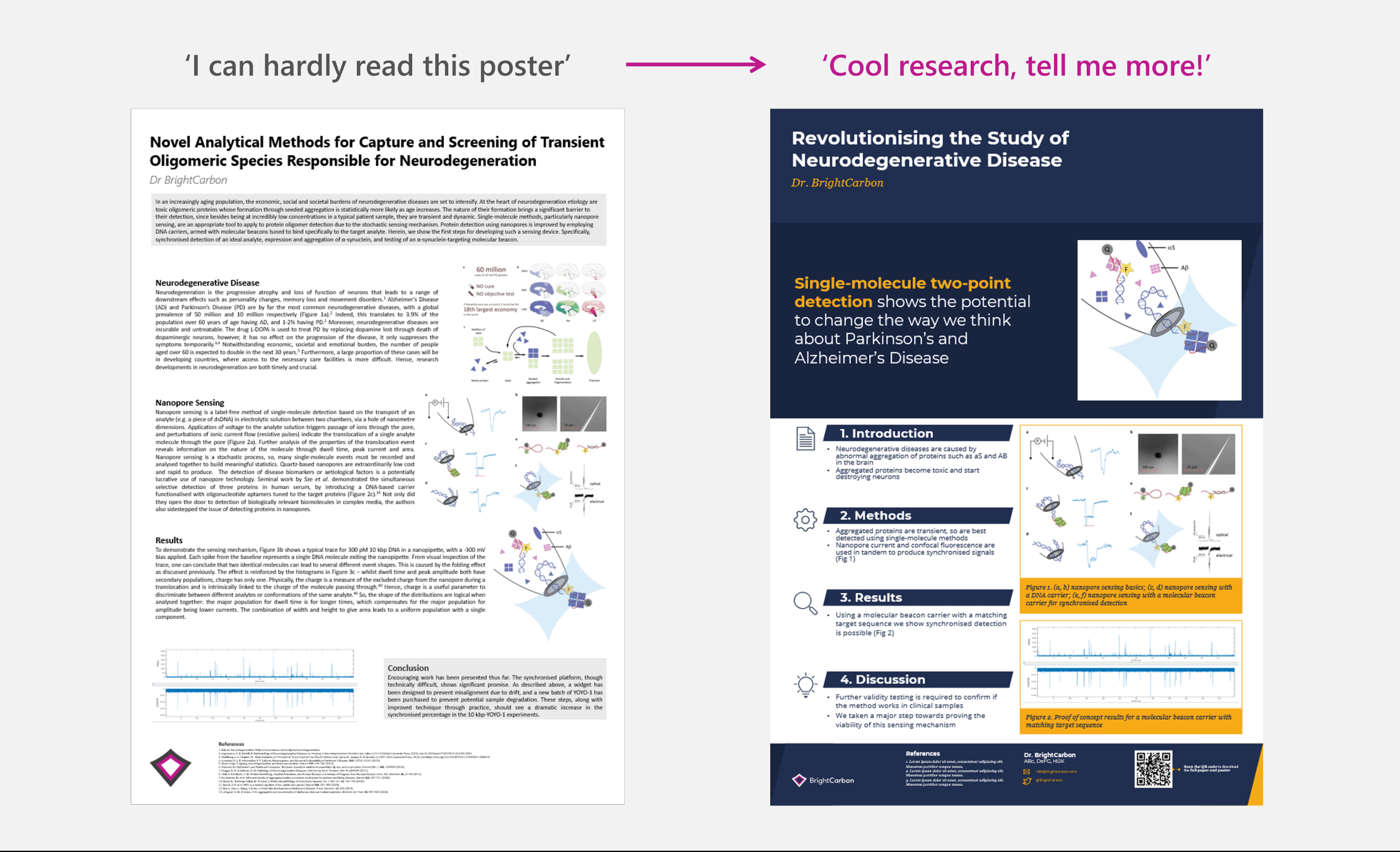
So, how do you go from your audience thinking ‘I can hardly read this poster’, to ‘Cool research, tell me more!’? First things first, get the content right…
Scripting
Layout
Creating an effective academic poster is all about making it easy for your audience to quickly understand the content. A clear and logical layout is fundamental to achieving this. Consider the hierarchy of your information. You want your audience to read the most important information first – in case they don’t make it to the bottom of the poster. So, place your key finding and a supporting graph or graphic right at the top of the poster. To ensure the rest of your poster is easy to read, consider the flow of your content. In the West, we read top to bottom, left to right so make sure your content follows this flow. You could number your sections or use arrows to guide the reader and use bullet points rather than long paragraphs of text. You can read more about hierarchy here
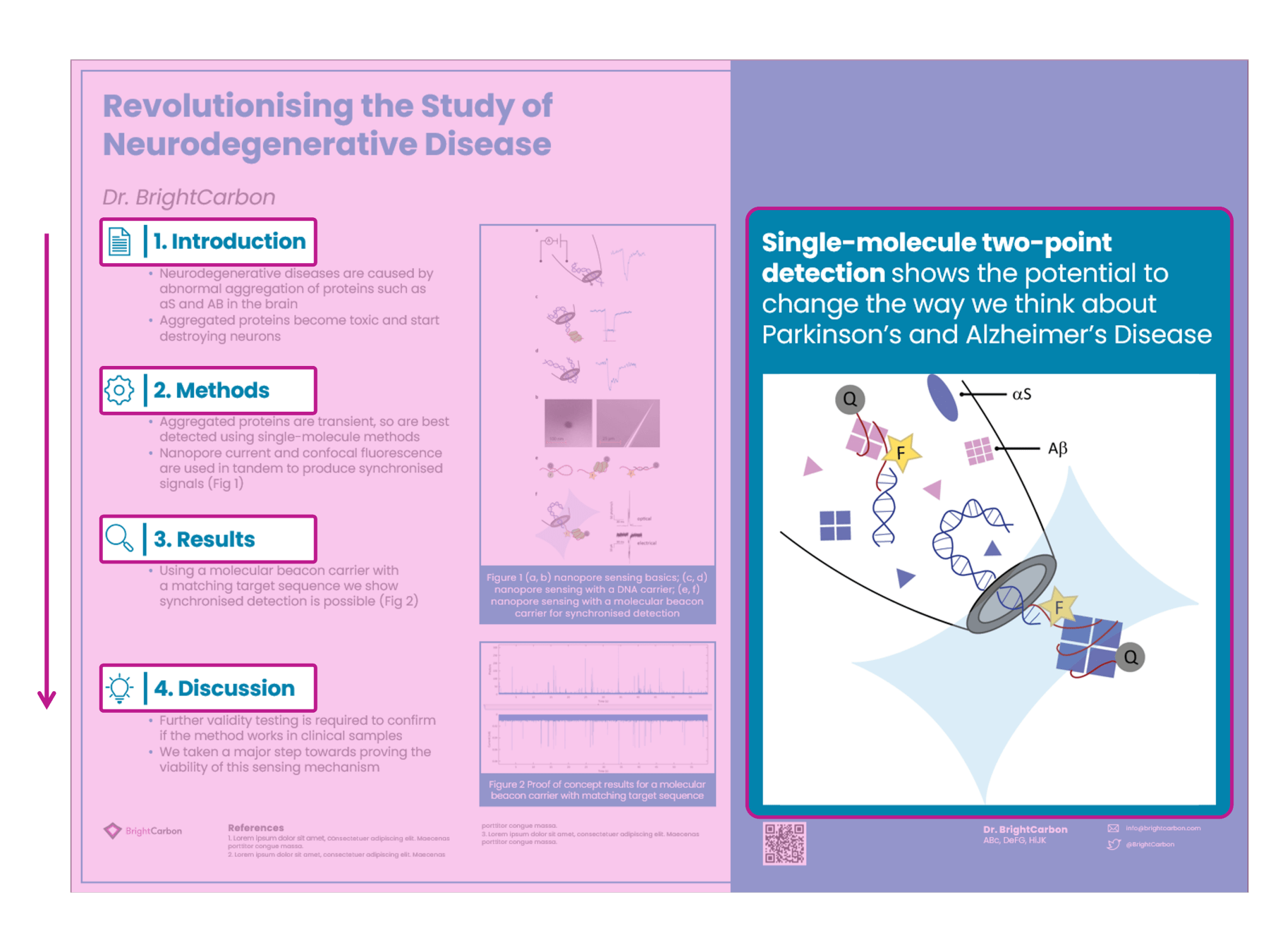
We’ve created 4 academic poster PowerPoint template layouts to help get you started!
Academic research poster template – Portrait
Academic research poster template – Landscape
Data
Your research will inevitably contain graphs and data, and whilst you may want to show them all off on your poster (because they took ages to make!) you need to decide which are the most important.
Your content is ready to go, now it’s time to make your poster beautiful! To give you a head start, we’ve created 4 different landscape and portrait academic poster PowerPoint templates each with their own unique design style! Pick your favourite and fill in the sections with your content. We’ve helped get you started with placeholders for headings, graphs, references etc. on each template but these are editable so you can customise your poster to work best for you.
Each template also has its own matching ‘sticker sheet’. Just copy and paste any of the elements you’d like to use on the sticker sheet on to your poster
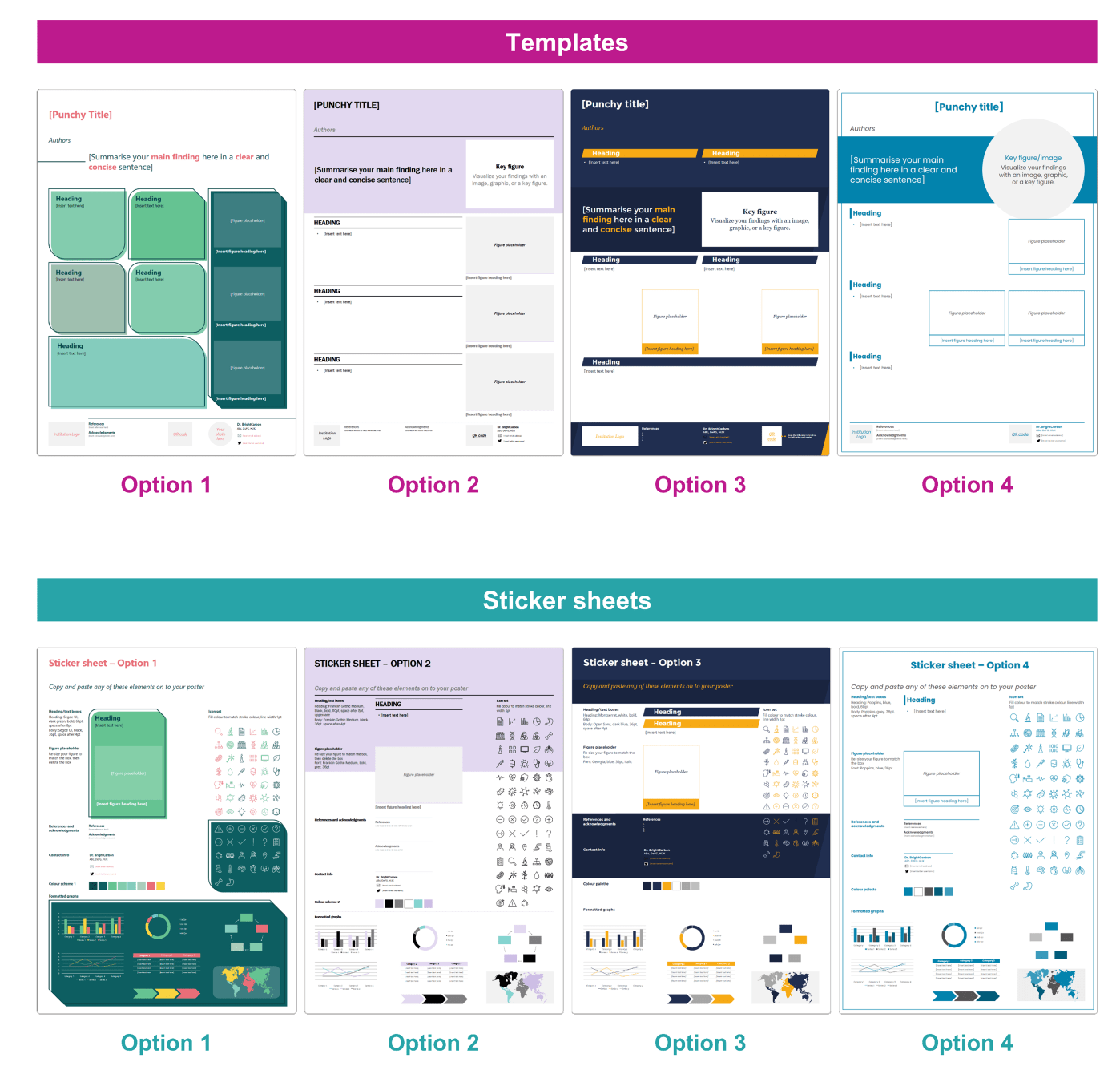
Now, let’s run through some top tips to make sure you get the most out of these templates!
Alignment and guides
Wonky alignment and a poor layout can make your poster look unprofessional before your audience has even had a chance to read all the good stuff! Guides are your secret weapon to help lay your content out in clear, easy to follow sections. We’ve already set up guides in our poster templates, if you can’t see them head to the View tab in PowerPoint and tick Guides.

Guides are important to help align and balance your poster design. Some key things to remember are to keep the border clear and maintain the gaps (gutters) between sections to give your content space to breathe.
If you want to create your own guides, this article shows you how easy it is with our free PowerPoint add-in BrightSlide.
White space
Don’t underestimate the power of what’s NOT on your poster. White space is essential for making a beautiful and effective poster. Your poster should roughly consist of 20-30% text, 30-40% figures and 40% space. Yep, you heard me, 40%! White, or ‘negative’ space is all about creating areas of contrast, with clear focal points to draw your attention to the important parts, and create a flow and hierarchy across your poster. Learn more about the power of white space
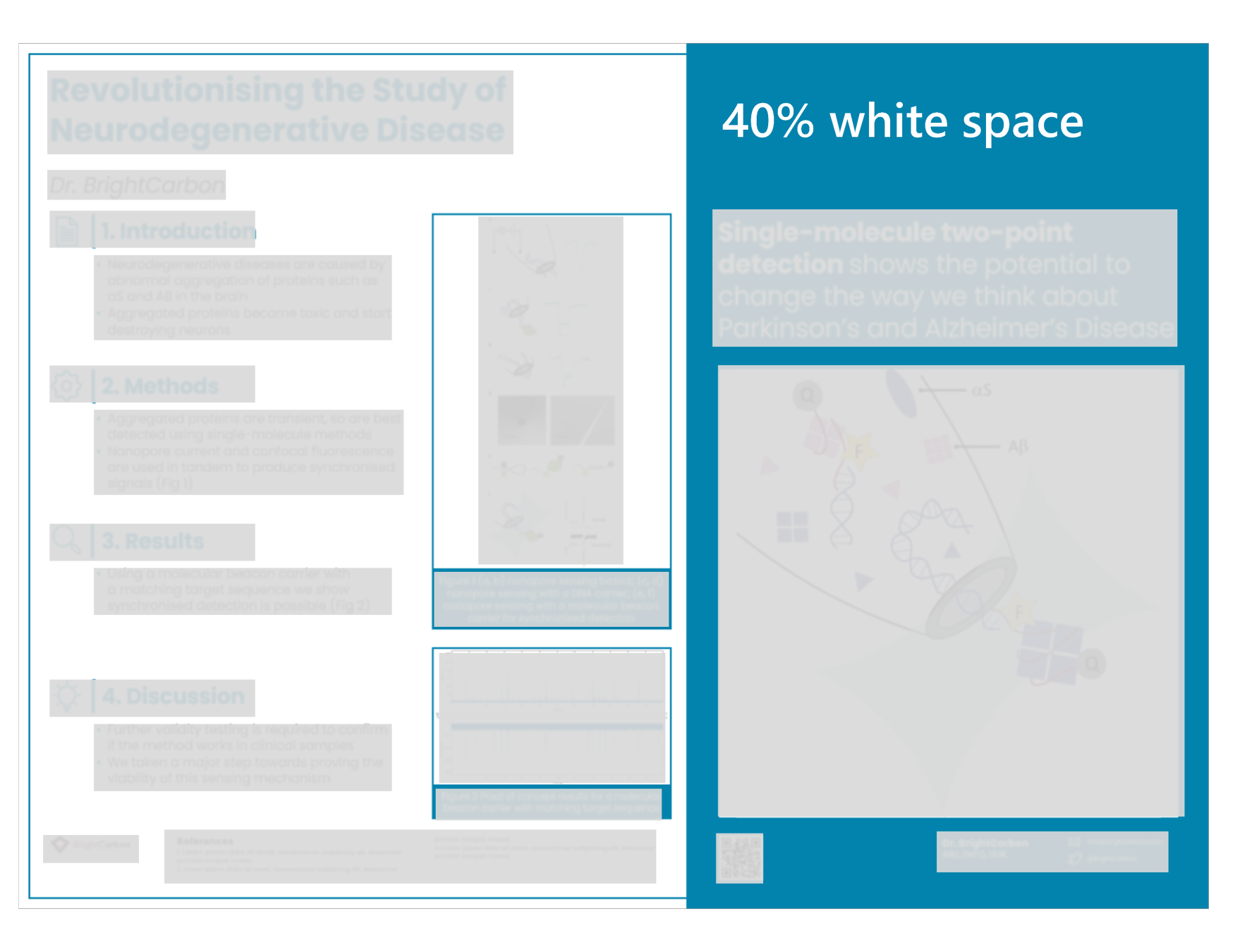
Try to avoid using photos in the background, it can clutter the poster and make it difficult for your audience to read the text or understand the graphs.
Colours
We’ve predesigned our poster templates with carefully selected colour schemes to make them simply beautiful! But we’ve got some tips on how to best apply the set colour scheme to your content.
Each template has a colour palette of 6-8 colours. We recommend using a bright colour as your accent colour to draw attention to key information on your poster. It’s important to use this accent colour in moderation to ensure it holds its attention-grabbing function! Make sure you apply the colour scheme to all the text, images and figures you’re using to keep your poster design consistent
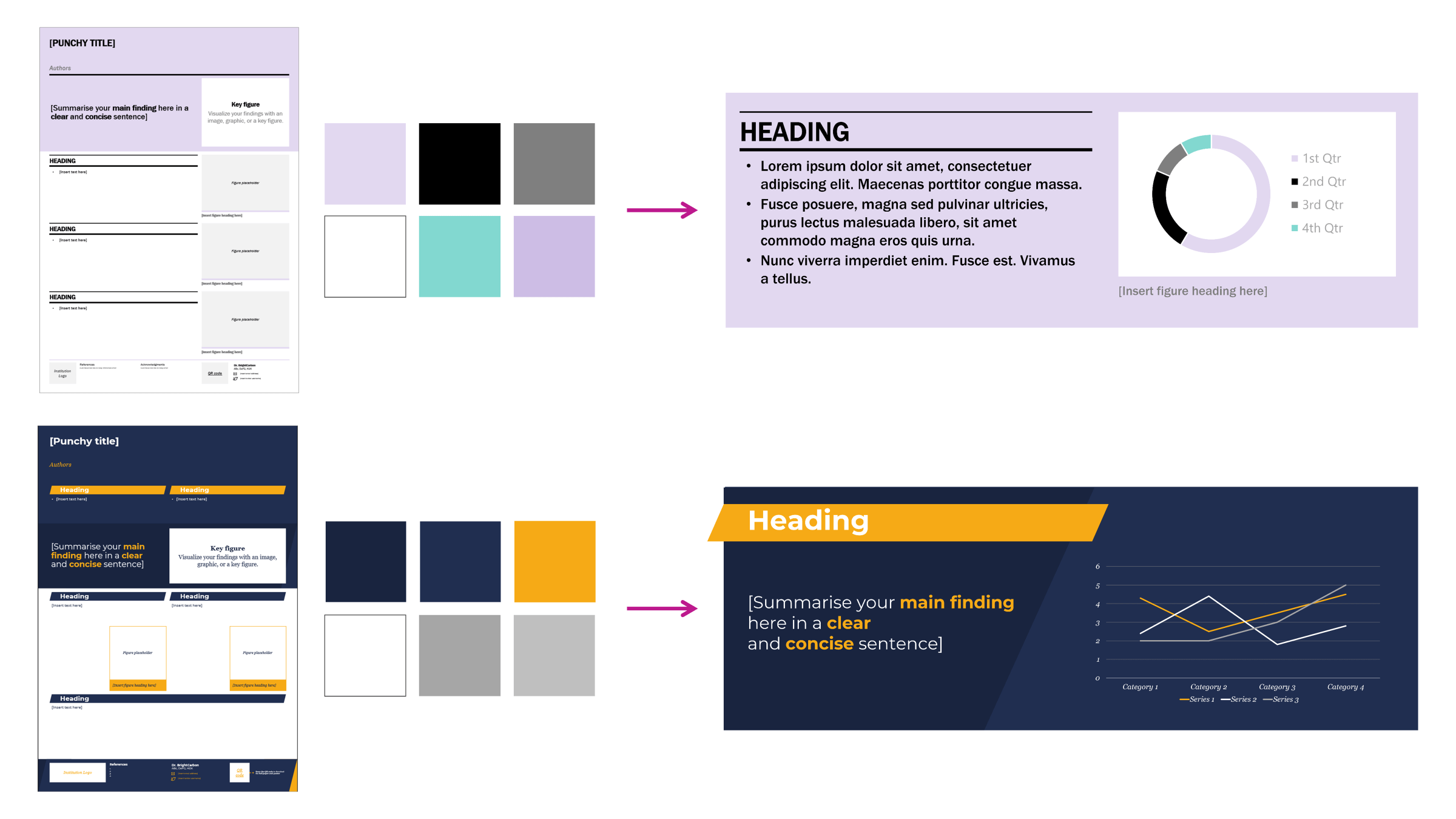
If you have to use specific colours, or fancy creating your own colour palette, here are some top tips:
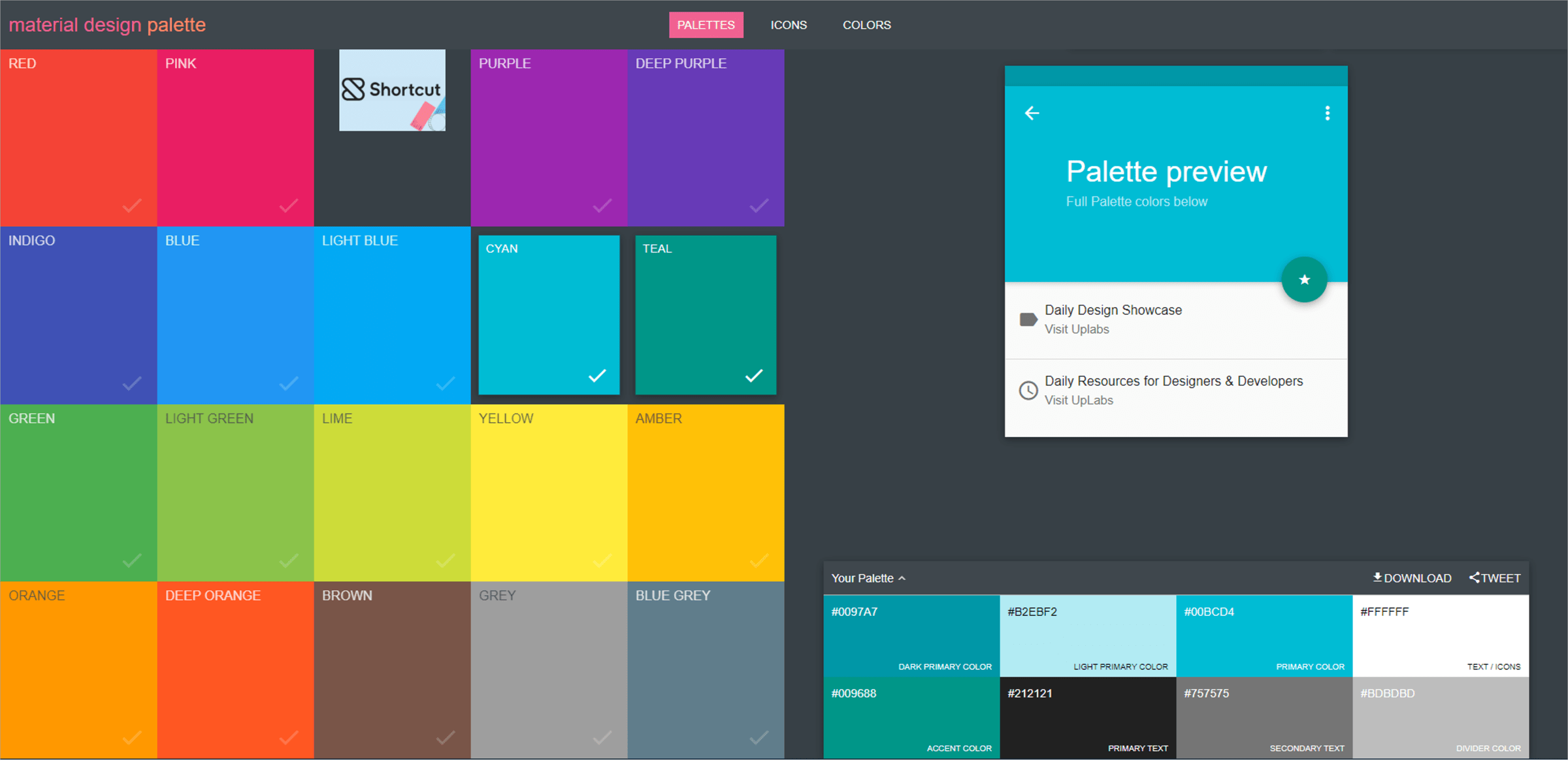
Fonts
Less is more when it comes to fonts, we recommend picking just one or two fonts. Using a second font can help to clearly distinguish your body text from your titles and headings, but this can also be achieved by making your titles and headings bold. Our poster templates have pre-set fonts but if you’re striking out on your own, here are some other fonts we recommend:



Read more about our recommended presentation fonts.
Font size is also important. Your poster needs to be readable from a meter away, and your title and headings need to stand out. For A0 posters, try sticking to these font sizes:
Check your font sizes by zooming in to your poster 100% and stand a meter away from your screen to test if you can easily read the body text and distinguish the headings.
Graphs
We’ve created some pre-designed graphs, tables and diagrams in the sticker sheet to copy and paste on to your poster and insert your own data.
However, we recognise that you may not be using Microsoft Office to create your charts and graphs. In this case, we recommend exporting the graph from whatever software you’re using (Origin, for example) as an EMF image, and pasting that into your poster template. You can then ungroup the image and format the elements of the chart to match your poster template fonts and colours. Don’t forget to regroup the graph afterwards to make it easier to move and resize!
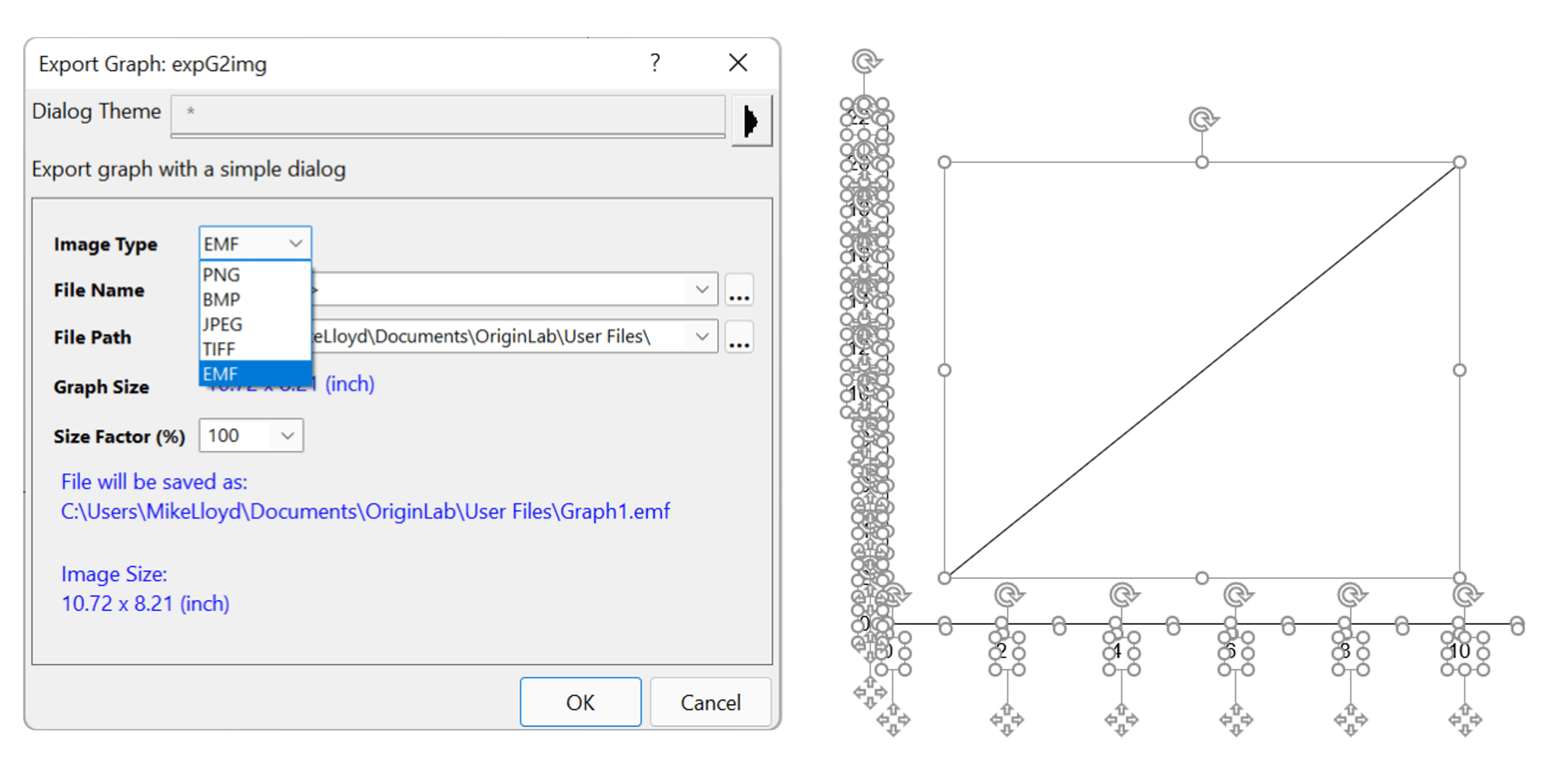
To make the most of your graphs and data, focus your audience’s attention on key information by using PowerPoint shapes or arrows. Edit the line colour, fill colour, and transparency to highlight important trends or values on your graphs.
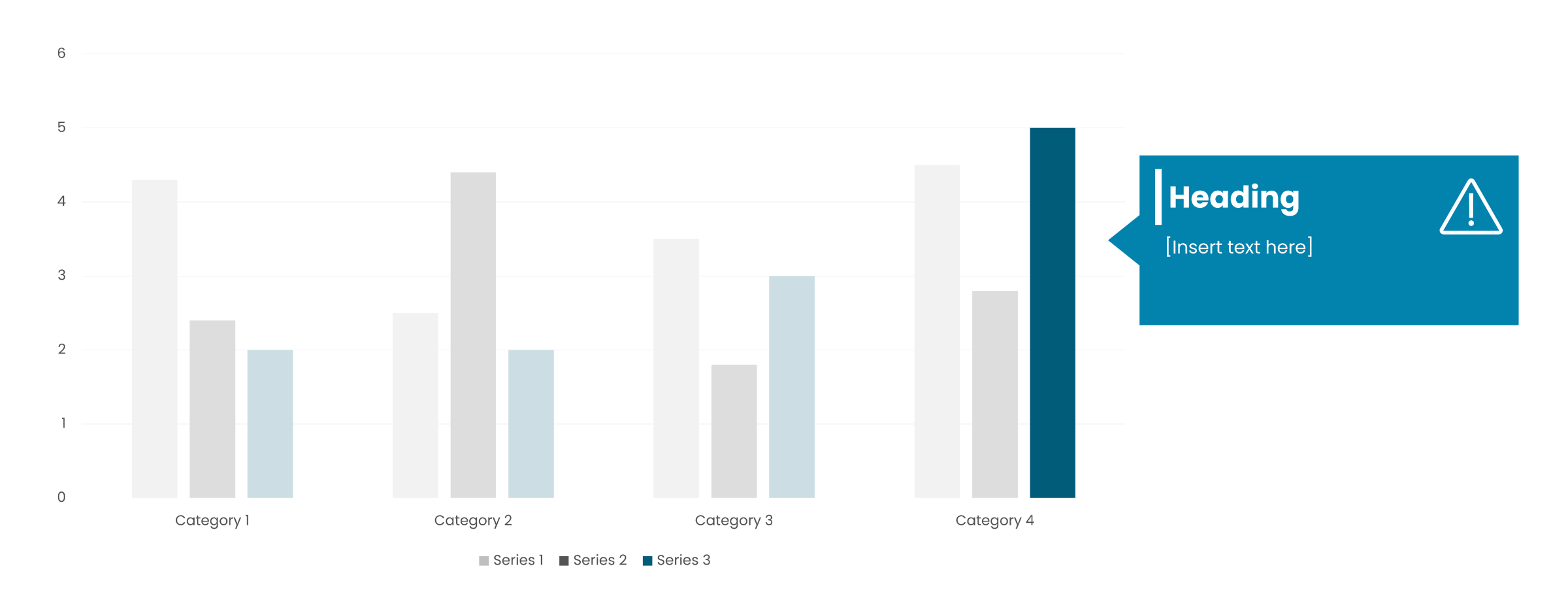
Illustrations and icons
Icons are great for storytelling and can really help to cut down your word count. We’ve created a pre-coloured icon set for each sticker sheet – if you’re looking for something specific, you can search for more icons by going to Insert > Icons in PowerPoint. You can recolour PowerPoint icons to match your template using the Fill colour tool. In fact, there’s almost nothing you can’t do with icons in PowerPoint! Learn more in this article.

If you’re using Office 365, you’ll be able to access PowerPoint’s native presentation icons, and we have a blog post showing you how to insert these PowerPoint icons. Whilst PowerPoint has a LOT of icons to choose from, you may be looking for something more specific for your research. If you’re in the environmental sciences, the IAN image library is a great free library of graphics. Another great generalist website to find free illustrations and icons is Freepik.
If you’re really after something custom or specific, Adobe Illustrator is a powerful tool for creating illustrations. Though it’s a paid software, there are lots of free resources out there to help you create exactly what you need. If Adobe Illustrator isn’t the right choice for you, PowerPoint can be used to create surprisingly sophisticated illustrations as this post explains.
QR codes
Adding a QR code to your poster is a quick way to provide your audience with access to your full paper or a digital copy of your poster. This allows the attendees to walk away with as much information as they like. You can be more confident condensing your content for your poster, safe in the knowledge that your audience can still access your full paper through your custom QR code. You can head to Canva or qrcodemonkey to create a QR code. If you want to link to multiple files or locations, it may be worth using Linktree which allows you to connect your audience to multiple locations through a single link from your QR code. You can then add that QR code to your academic poster in PowerPoint before exporting the it ready to share.
Finishing up
I hope your poster is coming together nicely now! But… you’re not quite finished yet. Here are a few tips to make sure you, and your poster, are ready to go!
It’s important not to miss out this feedback phase, and do it sooner rather than later, so you can implement any changes in good time! Trialling your poster will give you more confidence to present at your poster session too.

Download all the free academic poster PowerPoint templates to get started!
Academic research poster template – Portrait
Academic research poster template – Landscape
We’d love to see the academic posters you make in PowerPoint using these templates, please send them to us or share them on twitter and tag us @BrightCarbon.
Leave a commentFind out how you can make more accessible and inclusive presentations by thinking carefully about fonts, layouts, colours and structure.
Icons are a fantastic and versatile way of making your presentations more visually engaging. However, icons can also end up being at best decorative or at worse distracting when not used carefully. Learn three tips for choosing the right icons for your presentations.
We’re calling out one of the major injustices of corporate rebrands across the globe – PowerPoint falling to the bottom of the rebranding checklist. We discuss why it's a problem and how to fix it!
Join the BrightCarbon mailing list for monthly invites and resources
Tell me more!We have worked with BrightCarbon for over 5 years, across a number of healthcare divisions, where they have been a very important part of our bid programme, supporting numerous awards of new contracts.
Sarah Appleton Brown Practice Plus Group

A really fantastic set of resources and advice. I’ve been running seminars for our PGRs on this topic for a few years. It’s both reassuring to see that I’m not the only one saying PowerPoint will do the job and it’s made me revisit my own support content to review and update my advice!
Many thanks
Jon
I would like to learn more on how to create an academic poster
Thankyou your information was invaluable
Thank you for this great advice!
Good many thank you so much.